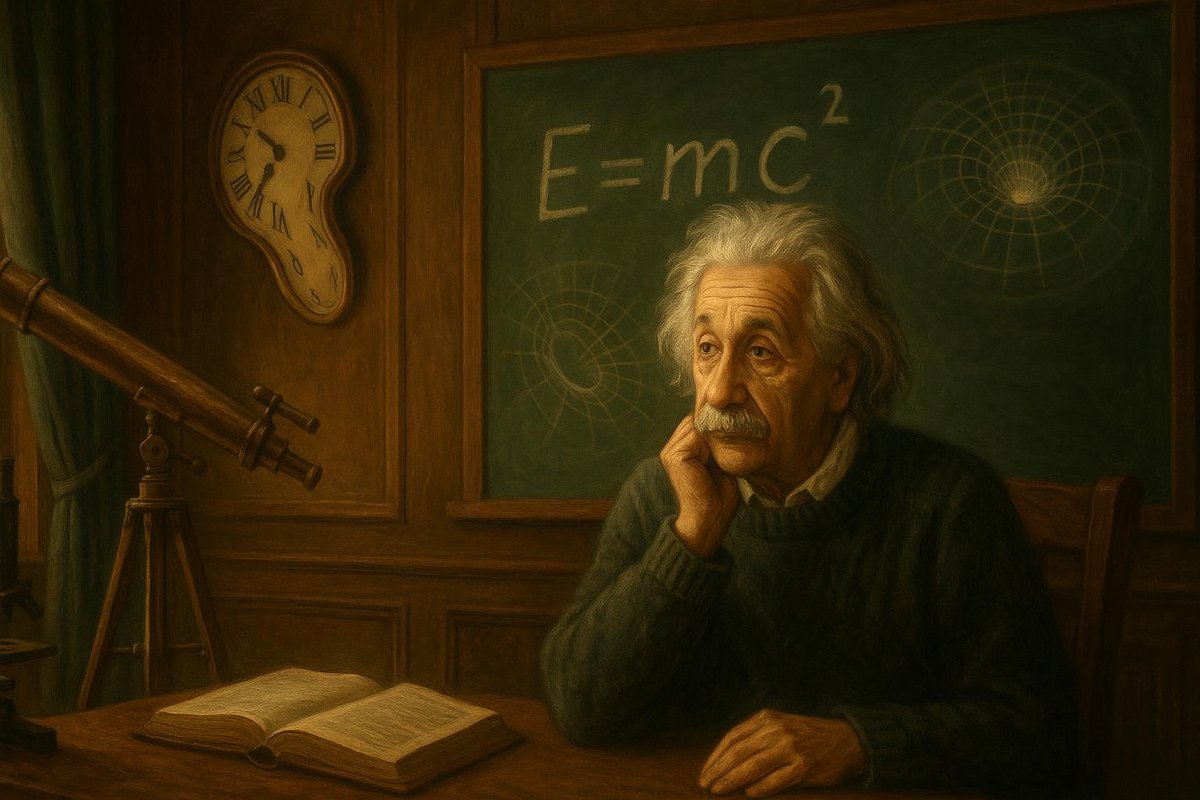
Imagine this: you’re on a train speeding through the countryside, watching another train on an adjacent track. From your perspective, it might appear as if the other train is stationary, while the landscape blurs past. This simple observation exemplifies a principle central to Einstein’s revolutionary Theory of Relativity, which fundamentally altered our perception of motion and time.
The Problem Context: A World Bound by Newtonian Physics
Before the dawn of the 20th century, the scientific world basked in the glow of Newtonian physics, which reigned supreme for over two centuries. Newton’s laws, penned in 1687, elegantly described motion and gravity, offering explanations that aligned well with everyday human experience and celestial movements. However, as technology progressed, subtle discrepancies began to emerge.
- Experiments with light revealed inconsistencies with Newtonian predictions.
- There was an inability to fully explain the behavior of objects at high velocities, approaching the speed of light.
- Mercury’s orbit deviated slightly from Newtonian calculations, posing questions that existing theories couldn’t answer.
Interestingly, it was this era of rapid technological advancements—electricity, telegraphy, and the burgeoning field of electromagnetism—that highlighted the limitations of classical mechanics. The need for a new framework for understanding the universe became apparent.
The Theoretical Breakthrough: Einstein’s Vision of Space-Time
Albert Einstein, a young patent clerk in Bern, Switzerland, was not constrained by the academic traditions of his time. He was, as many people believe, an eccentric thinker, often pondering deeply on fundamental principles rather than incremental scientific advancements. In 1905, during his annus mirabilis, Einstein published four groundbreaking papers, one of which introduced the Special Theory of Relativity.
- Einstein proposed that the laws of physics are the same for all observers, regardless of their relative motion.
- He introduced the radical idea that time and space are not separate entities but interwoven into a single continuum known as space-time.
- E=mc², his famous equation, revealed the interchangeability of mass and energy.
Einstein’s thought experiments, like imagining riding alongside a beam of light, showcased his unique intellectual style. He challenged existing norms, reshaping the foundation of physics with a mix of daring hypotheses and logical reasoning.
Supporting Evidence: Experiments and Observations
Of course, revolutionary ideas require robust evidence. Over the following years, Einstein’s theories were subjected to rigorous testing. One of the first significant confirmations came during the solar eclipse of 1919, when Sir Arthur Eddington observed the bending of starlight around the sun, affirming Einstein’s predictions.
- Mercury’s orbit was better explained by General Relativity, resolving previous anomalies left by Newtonian physics.
- The Pound-Rebka experiment in 1959 verified the redshift effect predicted by the theory.
- Global Positioning Systems (GPS) rely on adjustments for relativistic effects, demonstrating practical applications even today.
These experimental validations helped transform Einstein from a relatively obscure figure into a scientific icon. His work opened the door to further advancements in quantum mechanics and cosmology, providing a new lens through which to view the universe.
Modern Relevance: How Relativity Shapes Our World Today
As time goes on, Einstein’s Theory of Relativity remains a cornerstone of modern physics, underpinning technologies that enhance our daily lives. It challenges us to think beyond the confines of classical mechanics and explore the profound relationship between space, time, and gravity.
- GPS technology depends on precise time measurements, accounting for relativity to provide accurate location data.
- Understanding black holes and cosmological phenomena relies heavily on relativity principles.
- Scientific advancements in particle physics often reference Einstein’s work as a foundational framework.
The theory has not only expanded scientific understanding but also influenced philosophical debates on the nature of reality, time, and existence. Einstein’s mindset—a blend of curiosity, skepticism, and creative thinking—continues to inspire new generations of scientists and thinkers.
In conclusion, Albert Einstein’s Theory of Relativity was more than just a scientific breakthrough; it was a paradigm shift that reshaped our understanding of the universe. His innovative thinking and ability to see beyond the conventional opened new vistas for scientific exploration, leaving an indelible mark on both science and culture.
Fuel Someone Else’s Curiosity
If this exploration into the profound impact of Einstein’s Theory of Relativity intrigued you, consider sharing this article with friends, family, or fellow enthusiasts. Let’s keep the conversation going and inspire others to delve into the fascinating world of scientific discovery.

Leave a Reply